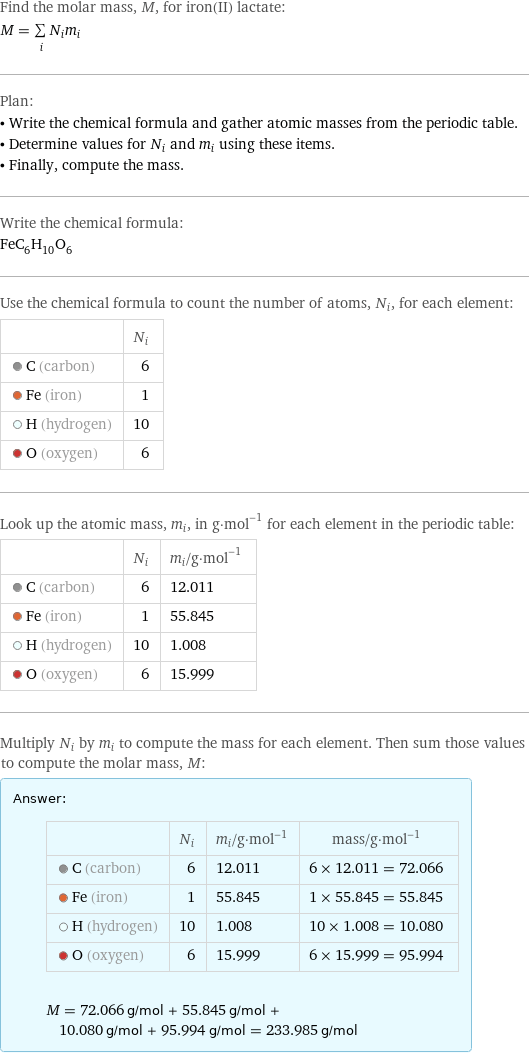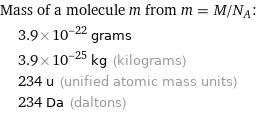Input interpretation

iron(II) lactate | molar mass
Result

Find the molar mass, M, for iron(II) lactate: M = sum _iN_im_i Plan: • Write the chemical formula and gather atomic masses from the periodic table. • Determine values for N_i and m_i using these items. • Finally, compute the mass. Write the chemical formula: FeC_6H_10O_6 Use the chemical formula to count the number of atoms, N_i, for each element: | N_i C (carbon) | 6 Fe (iron) | 1 H (hydrogen) | 10 O (oxygen) | 6 Look up the atomic mass, m_i, in g·mol^(-1) for each element in the periodic table: | N_i | m_i/g·mol^(-1) C (carbon) | 6 | 12.011 Fe (iron) | 1 | 55.845 H (hydrogen) | 10 | 1.008 O (oxygen) | 6 | 15.999 Multiply N_i by m_i to compute the mass for each element. Then sum those values to compute the molar mass, M: Answer: | | | N_i | m_i/g·mol^(-1) | mass/g·mol^(-1) C (carbon) | 6 | 12.011 | 6 × 12.011 = 72.066 Fe (iron) | 1 | 55.845 | 1 × 55.845 = 55.845 H (hydrogen) | 10 | 1.008 | 10 × 1.008 = 10.080 O (oxygen) | 6 | 15.999 | 6 × 15.999 = 95.994 M = 72.066 g/mol + 55.845 g/mol + 10.080 g/mol + 95.994 g/mol = 233.985 g/mol
Unit conversion

0.23399 kg/mol (kilograms per mole)
Comparisons

≈ 0.32 × molar mass of fullerene ( ≈ 721 g/mol )

≈ 1.2 × molar mass of caffeine ( ≈ 194 g/mol )

≈ 4 × molar mass of sodium chloride ( ≈ 58 g/mol )
Corresponding quantities

Mass of a molecule m from m = M/N_A: | 3.9×10^-22 grams | 3.9×10^-25 kg (kilograms) | 234 u (unified atomic mass units) | 234 Da (daltons)

Relative molecular mass M_r from M_r = M_u/M: | 234